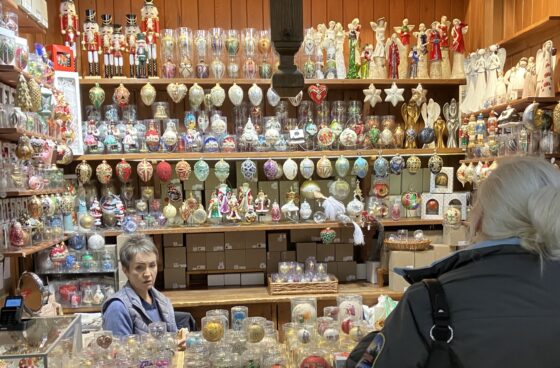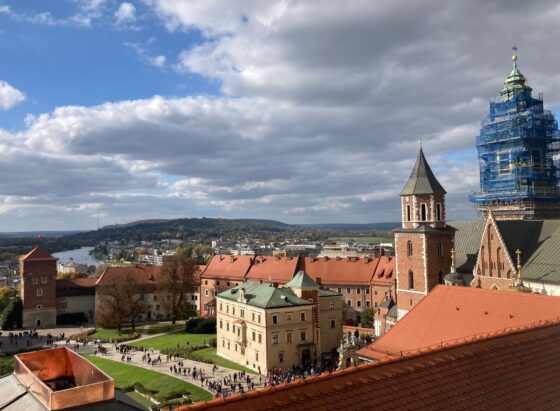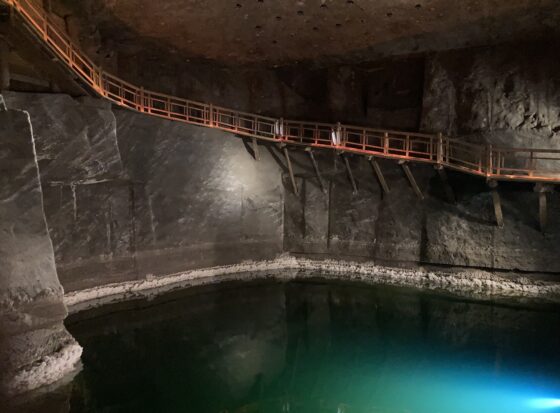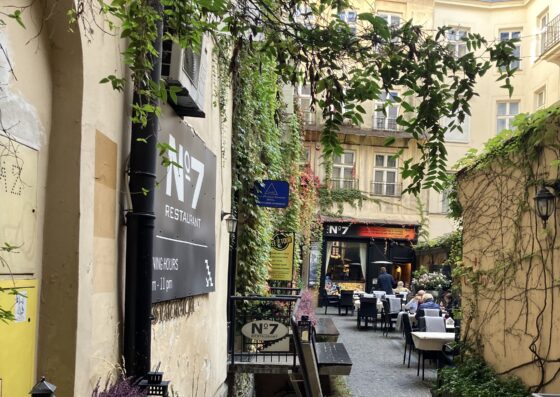Shopping
Destinations: a cracking autumn weekend in Krakow – DutchNews.nl
An autumn weekend in Krakow? Why not? It’s less than two hours away by plane from Schiphol and after all this time exploring Dutch towns and cities, why not go further afield for once.
Krakow is one of the oldest and the second largest city in Poland with a population of some 800,000. Situated on the Vistula river, it was the capital of Poland until 1596 and the old town has been a Unesco world heritage site since 1978.
Krakow is increasingly popular as a tourist destination and it is not hard to see why. Easy to get to, it is a charming city which has done its best to preserve its heritage.
When we were there, basked in the golden glow of sunny mid October days, we heard voices from all over the globe. It was busy, but not too busy, with plenty of cultural things to entertain us, friendly faces and a cocktail on every corner.
Five things to do
Get lost in the old town
The best way to appreciate any new location is just to hang out for a while. Main Market Square, which dates back to 1257, and the old town itself, offer an easy way to while away a few hours. The square is lined with cafes when you can stop for a coffee or a cocktail and watch what ever is going on at the time – a demonstration, a choral performance, a group of students dancing.

Off the main square there is a wealth of little streets to wonder around in, with a café on every corner and lots of small shops to browse. Stunning Christmas tree decorations and wooden toys are particular specialities, as is amber. On Grodzka Street we came across the baroque St Peter & Paul’s church where there is a classical concert at 8pm every evening.
Among the museums, the Czartoryski Museum is the oldest museum in Poland and was established in 1796 by the matriarch of the nobel Czartoryski family, princess Izabela. It includes a number of world class pieces including Leonardo da Vinci’s Lady with an Ermine.
Explore Rynek Underground
The Cloth Market dominates the centre of Market Square and you probably have no idea while browsing the souvenir shops that below your feet is an underground museum. Rynek Underground takes the visitor through the history of Krakow, based around the remains of older buildings which were covered centuries ago, as well as a horse burial and several “witches”.
There is a fair bit of medieval re-enactment to get through, but it’s a great way of getting to grips with Krakow’s past and there are lots of touch screens to keep the kids busy. The city was, for example, a member of the Hanseatic League, like so many Dutch towns, and had trading links all over Europe.
Marvel at Wawel castle and cathedral
Wawel Castle is suitably impressive, offering panoramic views over the city plus a wealth of art (including a fine Dutch collection), porcelain, and other artefacts such as some splendid Ottoman tents and ceremonial robes.


The grounds are free to wander around in, and you pay to visit the various parts – castle (in two sections), the treasury, armory and look-out tower. Doing it all will take a day, so we opted for the castle itself and the tower. If you have children, you can also book a visit to the dragons den. You can rent an audio guide but there is plenty of English information available.
The cathedral ticket office is separate and worth a visit just to gawp at the amount of gold decorations. The crypt contains the tombs of a number of people important to Poland’s past.
Walk around Kazimierz
Kazimierz, south of the old town and stretching to the river, is where the city’s Jewish population lived before World War II and is home to several impressive synagogues as well as churches, which are open to the public. The Old Synagogue is now part of the Historical Museum of Krakow and dedicated to the history of Polish Jews. The stunning gothic Corpus Christi Basilica is one of the most ornate churches we have ever seen.
Among the other sites worth visiting is Oscar Schindler’s Factory, made famous in the 1993 Steven Spielberg film, which tells the story of the Nazi arrival in Krakow in 1939 and Schindler’s efforts to keep 1,200 of the city’s Jews safe from certain death.
The circular building in the centre of Plac Nowy is the place to sample Polish street food. And at night Kazimierz is a bustling neighbourhood of cafes and bars, and feels much less touristy than the old town.
Visit the salt mines
The Wieliczka salt mines some 20 minutes south of Krakow are a Unesco world heritage site. Dating back 700 years, the mines include 300 kilometres of tunnels cut through the salt, occasionally opening out into large open spaces, such as a cathedral, which is still used for religious ceremonies today. A tour takes at least two hours, once you’ve walked down 60 metres of wooden steps and covers at least two kilometres, so it’s not for people who have difficulty walking.


All visits to the mine are with a guide and we found ourselves with the French group, because the English tours were full. So buy a time slot in advance if you want to be sure of understanding what is going on around you. If you would rather avoid the crowds, try and get the first tour of the day.
There are plenty of organised bus tours to the mines from Krakow, but we took a taxi, which cost around €30 from our hotel. There are several places to eat – including a Polish canteen 160 metres underground, where we ate meatballs, picked cabbage and chips.
Where to stay
We stayed at the Golden Tulip in Kazimierz, a bland but perfectly functional hotel which is a 20-minute walk from the market square. The staff were super helpful and the breakfast buffet was very good and open until 11.
If you want to be closer to the action, you are spoiled for choice in the city centre. Hotel Wentzl has an old fashioned charm and if you want to be more independent, there are several hotels offering serviced apartments, such as the Venetian House Aparthotel.


Where to eat
The main square is surrounded by cafes and restaurants, most of which have large terraces including heating to keep you cosy outside in the chillier months. They offer lots of pizzas and Italian food as well as eateries promising traditional Polish cuisine. Sandwiches for lunch are not a big thing in Poland.
We ate dinner at Szara Gęś which offers contemporary Polish cuisine with a modern twist. The “grey goose” desert, a cloud of cotton candy hiding a white chocolate mouse egg with mango ‘yolk’ was a joy. Szara Gęś is pricey even by Dutch standards but was delicious.
We also thoroughly enjoyed Noah in the Kazimierz district which offers Israeli cuisine in small portions for sharing. We had not booked, and Noah was packed but they still found us a table. The pickles in particular were excellent, as was the home made bread. In fact all the bread we ate during our visit to Krakow was good – not a soggy white sliced loaf in sight.


How to get there
KLM offers four flights a day from Schiphol airport, all of which take off at reasonable times. Ryanair and Wizz Air offer flights from Eindhoven. The flight takes just under two hours, depending on the wind. You need to change two or three times to reach Krakow by train and Flixbus offers a direct service that takes some 20 hours.
A taxi from the airport – which you can easily book in advance – costs around €25, but you can also take a train from the station, which is somewhat hidden across the road from main airport exit. The main railway station is build into a massive shopping mall where we spotted an ING cashpoint machine.
Anything else?
Wine is much more expensive than you might think, which may be the reason why cocktails are a big feature on every menu. And two full days was a bit short to pack it all in. We could definitely have stayed longer.
Our flight and hotel were paid by the Polish tourist board, which had no role in determining the editorial content.
